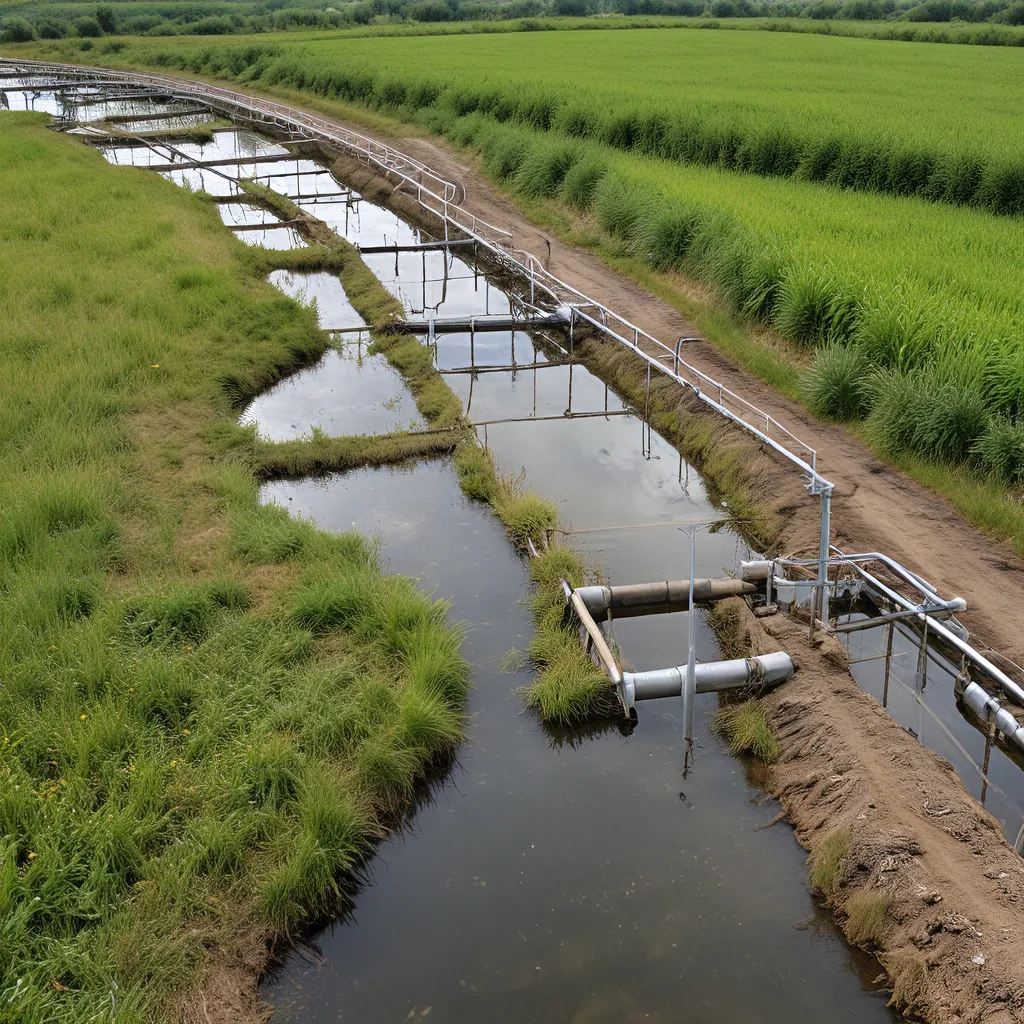
As an environmental enthusiast, I’ve always been fascinated by the concept of the bioeconomy – the idea of leveraging renewable biological resources to create a sustainable future. And when it comes to the bioeconomy, one area that’s been capturing my attention lately is the incredible potential of wastewater treatment and the production of biofuels from organic waste streams.
You see, we often think of wastewater as, well, just waste – something to be disposed of and forgotten. But what if I told you that these so-called “waste” streams are actually a veritable goldmine of untapped resources? That’s right, the very same wastewater that flows through our pipes and sewers could be transformed into valuable biofuels and other bioproducts, all while helping to address our global environmental challenges.
Unlocking the Treasure Trove of Organic Waste
As it turns out, the United States has an incredible potential to utilize a staggering 77 million dry tons of wet waste per year – that’s enough to generate a whopping 1,079 quadrillion British thermal units (Btu) of energy. And that’s not even counting the additional 1,260 trillion Btu that could be extracted from gaseous feedstocks. To put that into perspective, the total primary energy consumption in the U.S. in 2015 was around 977 quadrillion Btu. So, we’re talking about a truly massive, largely untapped resource right under our noses.
But what exactly are these “wet waste” streams, you ask? Well, they encompass a wide range of organic materials, including municipal sewage sludge, animal manure, and even industrial wastewater. And the good news is that these feedstocks are readily available, without the need for any additional land-use changes. In other words, we don’t have to worry about displacing food crops or natural habitats to get our hands on this valuable resource.
Innovative Conversion Processes: From Waste to Wealth
So, how do we go about harnessing the power of these organic waste streams? Well, the U.S. Department of Energy’s Bioenergy Technologies Office (BETO) has been actively exploring a range of innovative conversion technologies that could help us unlock the full potential of these feedstocks.
One promising avenue is hydrothermal processing, which involves subjecting the wet waste to high temperatures and pressures in the presence of water. This process can effectively convert a diverse blend of feedstocks into valuable biofuel and bioproduct precursors. For example, the Pacific Northwest National Laboratory has successfully produced a diesel blendstock from municipal sludge, and larger-scale pilot efforts are already underway.
But hydrothermal processing isn’t the only game in town. BETO is also exploring alternatives to traditional anaerobic digestion (AD), which has been the go-to method for converting organic waste into biogas. While AD is widely used, it has its limitations – it only reduces waste volumes by about 50%, and the resulting biogas requires significant cleanup before it can be used as a vehicle fuel or injected into natural gas pipelines. Plus, it’s a capital-intensive process, making it uneconomical at smaller scales.
Enter the innovative alternatives that BETO is investigating, such as anaerobic membrane bioreactors and other reactor designs that have the potential to reduce capital costs dramatically while producing biogas with a higher methane content. And the possibilities don’t stop there – BETO is also exploring ways to utilize both the carbon dioxide and methane from biogas to create even higher-value fuels and products.
Collaborating for a Greener Future
Of course, harnessing the power of organic waste streams isn’t a solo endeavor. It requires a coordinated effort across various stakeholders, including federal agencies, local governments, industry players, and research institutions.
That’s why BETO has been actively engaging with a wide range of partners through a series of workshops and listening days. These events have brought together experts from diverse backgrounds to discuss the challenges, opportunities, and potential strategies for advancing waste-to-energy technologies.
For example, the Waste-to-Energy Technical Assistance for State, Local, and Tribal Governments program pairs national laboratory experts with decision-makers at the state, local, and tribal levels. Together, they tackle knowledge gaps, specific challenges, and implementation strategies to help communities make the most of their waste resources.
And it’s not just BETO leading the charge. The U.S. Environmental Protection Agency (EPA) has also been actively involved, collaborating with the U.S. Department of Agriculture and the Department of Energy on initiatives like the Nutrient Recycling Challenge. This program focuses on recovering valuable nutrients from dairy and swine manure, further demonstrating the incredible potential of organic waste streams.
The Future is Bright (and Sustainable)
As I delve deeper into this fascinating world of wastewater treatment and the bioeconomy, I can’t help but feel a sense of excitement and optimism. The sheer scale of the untapped potential is staggering, and the innovative technologies being explored hold the promise of transforming our waste streams into valuable resources.
Just imagine a future where our wastewater treatment plants are not just facilities for managing waste, but also hubs of biofuel production and bioproduct generation. Where the carbon dioxide and methane from biogas are harnessed to create even more valuable fuels and chemicals. Where nutrient recovery from manure helps to close the loop and support sustainable agriculture.
Of course, we’re still in the early stages of this transformation, and there are undoubtedly challenges and barriers to overcome. But the progress being made and the collaborative efforts underway give me confidence that we’re on the right track.
So, the next time you flush the toilet or let the water run, I hope you’ll think about the incredible potential that lies within those seemingly mundane waste streams. Because the future of the bioeconomy just might be flowing right through our pipes.
And who knows, maybe one day you’ll be driving your car on biofuel made from the very same wastewater you produced. Now, that’s what I call closing the loop in style!